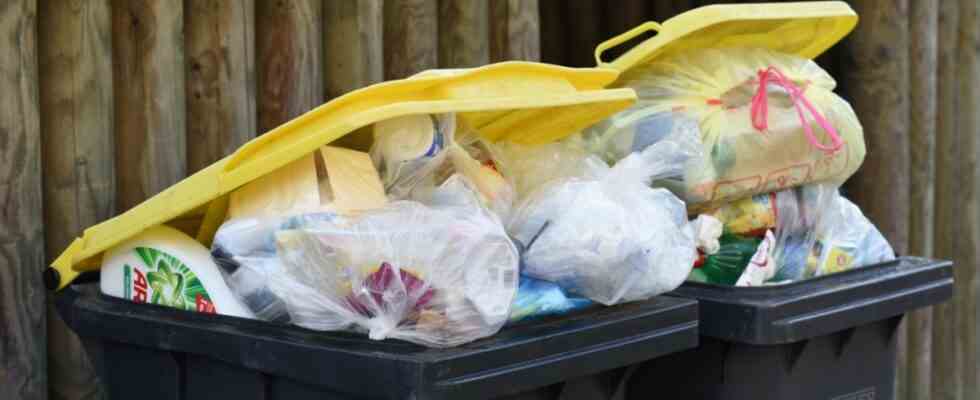There are three waste bins in front of the houses in the Starnberg district: a blue one for waste paper, a brown one for kitchen waste, organic and green waste, and the gray one for residual waste. Property owners and caretakers can already think about where to put a fourth container: the waste disposal companies also want to introduce the yellow bin. Recyclable waste is then collected in it – especially plastics, which previously ended up in a large bag, the yellow sack. “This is clearly what the citizens want, and we’re going ahead with it,” said Christoph Wufka, board member of the municipal company for waste management in the Starnberg district (Awista), on Thursday.
The yellow sack has advantages, but also disadvantages compared to the yellow bin
The Awista wants to introduce the new bin in 2025. So far, however, there has still been resistance from the commissioned disposal companies, said Wufka at a press conference in Starnberg the day after a meeting of the board of directors. “Maybe we have to enforce that through the courts.” According to him, the yellow sack previously used is easier to collect on the two-week tours. It is simply thrown into the back of the vehicle, while a plastic container must first be maneuvered onto the road and then hooked into the unloading mechanism. The majority of district citizens would prefer a ton, however, explained the Awista boss. A survey four years ago showed that “we have a clear statement”.
The disadvantages of the previous system will be evident again in autumn when the weather is stormy: collection bags are sometimes shredded and the contents then fly around on the street. Waste for the yellow bag has increased significantly in recent years, mainly due to the pandemic with its consequences: home office and home schooling, more food is ordered in disposable packaging. As a result, the “Yellow Bag” division has grown by around 20 percent.
“I am confident that we will manage to keep the fees,” says Christoph Wufka, head of waste management in the district.
(Photo: Franz Xaver Fuchs)
Far too much organic waste ends up in the residual waste
Nevertheless, the amount of waste in the district as a whole is falling slightly. According to the current figures, it was 552 kilograms per inhabitant last year. That makes a little more than 75,000 tons in total, of which almost 60,000 tons were recyclable. The recycling rate is therefore 78 percent – and thus at a “constantly high level”. Therefore, great praise from the Awista boss: “On the whole, you have to praise the people in the district for their separation behavior. It works very well”. The Awista regularly checks how well people are separated. This year it was the turn of paper and organic waste, next year it will be residual waste: in certain areas, randomly selected waste bins will be emptied onto a truck so that the contents can be picked apart and examined later. But one thing is already known: far too much organic waste ends up in the residual waste.
The waste disposal fees in the district of Starnberg are among the lowest in Germany
As stated in the annual report of the Awista, the waste fees, equivalent to around 40 cents per day and four-person household, are “among the lowest in Bavaria and all of Germany” – and that with a three-ton pick-up service and free recycling depots. This is not the case everywhere in Bavaria. According to Wufka, it could stay that way, at least for the time being. “I’m in good spirits that we’ll manage to keep the fees, but I can’t promise it.” Despite Corona, inflation and the energy crisis. He is concerned about a new law that could be passed in October: It would mean that waste incineration would become more expensive due to a surcharge, which would then affect Awista and ultimately also the fee payers.

